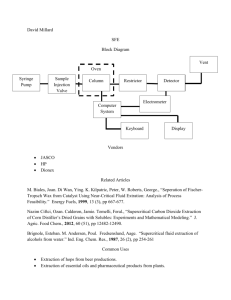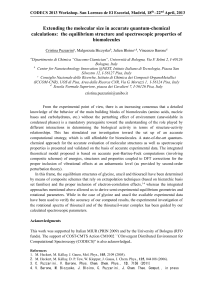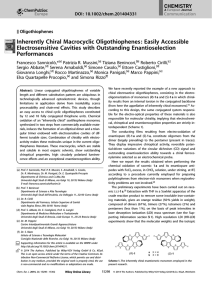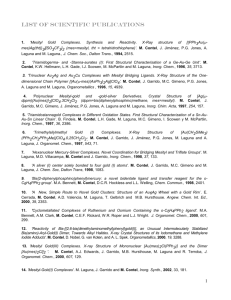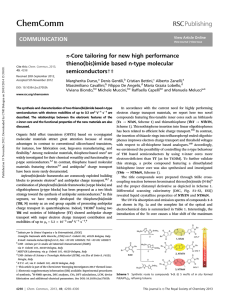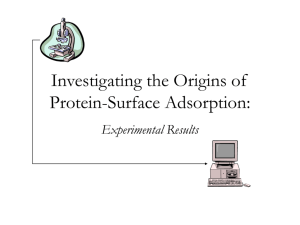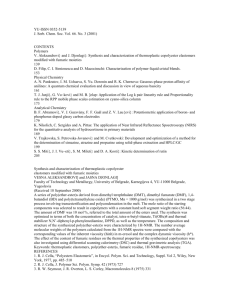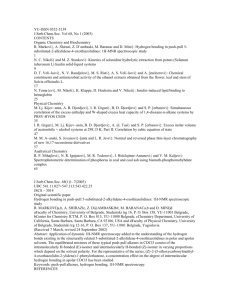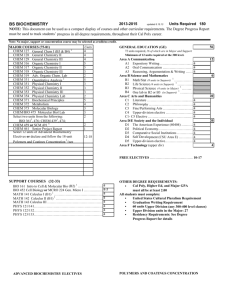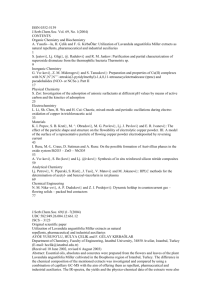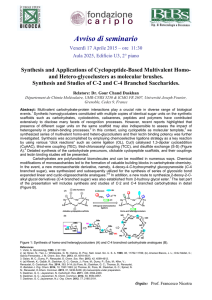n - Indico
advertisement
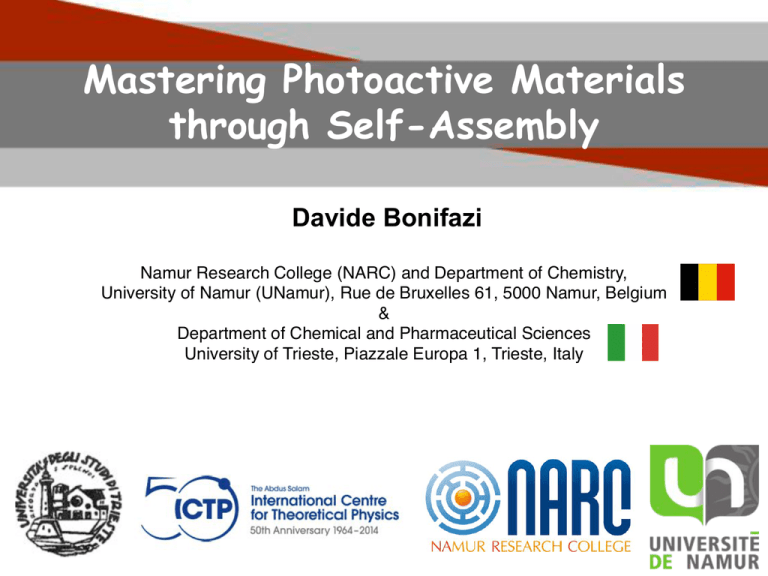
Mastering Photoactive Materials
through Self-Assembly
Davide Bonifazi
Namur Research College (NARC) and Department of Chemistry,!
University of Namur (UNamur), Rue de Bruxelles 61, 5000 Namur, Belgium!
&!
Department of Chemical and Pharmaceutical Sciences!
University of Trieste, Piazzale Europa 1, Trieste, Italy!
Supramolecular
Organic
Nanochemistry
Supramolecular
Chemistry with
Living Systems
Organic
Chemistry
Newly Emissive !Conjugated Materials
Biomimetic
Nanostructuring
of Surfaces
Advanced Materials
on Carbon-based
Nanostructures
Molecules vs Organizations vs Functions!
Mimicking and Controlling
Natural or Artificial Systems
Molecular Structure
?
Macroscopyc Structure
Controlled Organization by
Programming Directionality at All
Levels
!
3!
An hierarchical approach
Submolecule
Molecule
Supramolecule
Nano and Micro level
Macroscopic functions
Thylakoid membrane organization: the PSII and PSI system !
Chlorplast!
Grana!
Photosynthetic Protein
Complexes, P. Fromme
Ed., 2008.!
5!
Electron microscopy projection of a PSII core & LHC complexes!
6!
Structural organization of photosystem II (PSII) in higher plants!
AFM!
Nature Chem. 2011, 3, 763!
7!
Structural and light-absorption characteristics of a LCHII!
UV-vis absorption spectrum at 77K!
Chlorophyll-a (RED) Chlorophyll-b (BLUE)
Lutein (ORANGE) Violoxanthin (YELLOW)!
(the neoxanthin is omitted)!
Nature Chem. 2011, 3, 763!
8!
Solar Energy vs Plant absorbance!
http://plantphys.info/plant_physiology/light.shtml!
9!
Mimicking photosynthetic reaction centers!
"CS = 660 ns!
Angew. Chem. Int. Ed. 2002, 42, 4060!
10!
Fullerene-based molecular antennas!
h!!
!"#$!
!"#&!
!$#"!
!'#"!
Antenna!
HexO
OHex
HexO
%
%
%
%
"CS = 260 ns!
OHex
Chr1!
HexO
OHex
S
N
e –!
EnT!
5j
N
Fe
!"!#$%&! '
!!()!*%#!+,
!"!#$%-! '
()!.#.#!+,
Chr2!
Dr. A. Kremer!
Unpublished results, in preparation.!
Benzonitrile at 293 K!
11!
Nanostructuring approaches
Non-covalent Interactions
H-Bonding
(4-120 kJ/mol)!
Metal Coordination
(40-120 kJ/mol)!
Halogen Bonding
(20-40 kJ/mol)!
Electrostatic
(50-200 kJ/mol)!
Dipolar Interactions
(5-50 kJ/mol)!
Pure Appl. Chem. 2010, 82, 917; Chem. Soc. Rev. 2012, 41, 211.
Low-dimensional carbon nanostructures
Molecular!
C60!
Smalley, R. E. et al. !
Nature !
1985, 318, 162!
C70!
Whetten, R. L. et al.!
J. Phys. Chem. !
1990, 94, 8630!
C540!
Kroto, H.!
Pure Appl. Chem. !
1990, 62, 407!
Particellar!
Nano-onions!
Ugarte, D. !
Nature !
1992, 359, 707!
Nano-cones!
Sattler, K. et al. !
Chem. Phys. Lett. !
1994, 220, 192!
Nano-horns!
Nano-diamond!
Greiner, N. R. et al. !
Nature !
1990, 343, 244!
Nano-beads!
Zhao, X. L. et al. !
Carbon !
1998, 36, 507!
Nano-dots!
Scrivens, W. A. et al. !
J. Am. Chem. Soc. !
Iijima, S. et al. !
Chem. Phys. Lett. ! 2004, 126, 12736!
2000, 321, 514!
1D!
SWCNTs!
Ichihashi, T. et al. !
Nature !
1993, 363, 603!
DWCNTs!
2D!
Graphene!
Novoselov, K. S. et al. !
Science !
2004, 306, 666!
Thiel, F. A. et al. !
Nature !
1991, 351, 380!
Graphene !
nanodots!
Graphene !
nanoplatelets!
Zakharov, D. N. et al. !
Carbon !
2001, 39, 761!
Novoselov, K. S. et al. !
Science !
2008, 320, 356!
MWCNTs!
Graphene !
nanoribbons!
Iijima, S. !
Nature !
1991, 354, 56!
3D!
Fullerite!
Dresselhaus, M. S. et al.!
Phys. Rev. B !
1996, 54, 17954!
Thiel, F. A. et al. !
Nature !
1991, 351, 380!
Nanocristalline!
diamond films!
Gruen, D. M. et al. !
Annu. Rev. Mater. Sci. !
1999, 29, 211!
1!
Carbon nanotubes
PROPERTIES
• High carrier mobilities (~1,20,000 cm2 V-1 s-1)
• Large surface areas (~1600 m2 g-1)
• Absorption in the IR range (Eg: 0.48 to 1.37 eV)
• Conductance - Independent of the channel length
• Great current carrying capability – 109 A cm-2
• Semiconducting CNTs – Ideal solar cells
• Mechanical strength & Chemical stability
Chiral and Achiral SWCNTs!
Mirror Images!
CURRENT DRAWBACKS
• Not homogenous structural distribution
• Mixtures of metallic and semiconductor
• Different diameters
Nature Nanotech. 2008, 3, 387. !
14!
Chemistry of Carbon Nanotubes
Covalent sidewall functionalization!
Defect-group functionalization!
Noncovalent exohedral
functionalization with surfactants!
Polymer wrapping!
Endohedral functionalization with C60!
(a) Hirsch, A. Angew. Chem. Int. Ed. 2002, 41, 1853; (b) Haddon, R. C. et al. Acc. Chem. Res. 2002, 35, 1105 (c)
Khlobystov A. N. et al. Acc. Chem. Res. 2005, 38, 901; (d) Prato, M. et al. Chem. Rev. 2006, 106, 1105; (e)
Bonifazi, D. et al. Chem. Soc. Rev. 2009, 38, 2214.!
Creation of new CNT-based luminescent hybrids
Lanthanides!
CNTs!
• Intense line-like emission!
• Conducting or semiconducting
properties!
• Long lifetime decay!
• One-dimensional structure!
• Ease of synthesis/tuning of
properties!
• Several functionalization
methodologies available!
K. Binnemans, Chem. Rev. 2009, 109,
4283; S. V. Eliseevaa, J.-C. G. Bunzli,
Chem. Soc. Rev. 2010, 39, 189.!
S. Iijima, Nature 1991, 354, 56; C. N. R.
Rao, B. C. Satishkumar, A. Govindaraj, M.
Nath, ChemPhysChem 2001, 2, 78.!
PROBLEMATICS:
• Interchromophoric quenching issues
• Difficulties to preserve structural organization
Rare-hearth complexes
17!
SWCNTs coated with Eu(III) complexes
Z-contrast ADF-STEM
micrographs !
Adv. Funct. Mater., 2007, 17, 2975. !
Steady-state UV-Vis absorption and emission
T = 298 K
MeOH Solution
T = 298 K
Matrix: Polyethylene
N. Armaroli & G. Accorsi!
Luminescent CNTs-Eu(III) host-guest complexes
Chem. Eur. J. 2011, 17, 8533.!
Dr. L. Maggini!
Absorption!
"em = 616 nm!
Emission!
"ex = 300 nm!
washed!
unwashed!
Structural and
Photophysical
Characterization
(Emission and TEM)!
TEM!
N. Armaroli, J. Mohanraj!
EDX!
A. Parisini!
Non-covalent decoration of MWCNTs
through ion-pairing interactions
STRATEGY: exploit the columbic interactions between ionic liquids and
negatively-charged Lanthanide complexes
“Ionic
Assembly”
Europium complexes designed and
synthesized by the group of Prof.
M. Pietraszkiewicz
Chem. Commun., 2011, 47, 1626 !
Luminescent materials
23!
Dendronic ion-paired MWCNTs-Eu(III) hybrids
Boosting the Load
and the Stability: a
Combination between
non-Covalent and
Covalent Approaches
paper in preparation, unpublished. !
Boosting the Load
and the Stability: a
Combination between
non-Covalent and
Covalent Approaches
D. BONIFAZI - Nanocarbon11 - Acquafredda di Maratea – 06-11/09/2011!
Chem. Eur. J. 2012, 19, 5889.!
In coll. with M. Prato!
paper in preparation, unpublished. !
D. BONIF
24!
DOSY-NMR: effectiveness of the ion-pairing
DOSY-NMR: The
ofof
thethe
IonIon
pairing
Interactions
DOSY-NMR:
Theeffectiveness
effectiveness
pairing
Interactions
'"
'"
(!!"
(!!"
69$"
&"
'!!"
$!!"
$!!"
)*+),-.)/012"
#!!"
)*+),-.)/012"
3-00-/4"
#!!"
$"
3-00-/4"
!"
!"
%"
!"
'!!"
!"
'!!"
#!!!"
#'!!"
$!!!"
$'!!"
./*0&$"#(%#/$"12#()34(5(64-(
#!!!"
#'!!"
$!!!"
%!!!"
$'!!"
%!!!"
Free [EuL4] and d-MWCNTs·[EuL4]!
=;>?"
<;;"
<;;"
=@>A"
=;>?"
&!"
%9:"
#"
%9:"
%9:"
%9;"
%9;"
%9:"
234567!0386 ,&-./01+" -./01234"
,&-./01+"
!"
!234567
!()*+&,
,&-./01+" 234567!0386 ,&-./01+" -./01234"
!234567
!()*+&!,
The DOSY eq.
I = I0 The
exp(-D
× !q)eq.
! !
DOSY
&!"
%!"
!"
I = I exp(-D × !q) !
0
Stokes–Einstein
eq.!
D = (kB × T) / (4 × π × η × r)!
%!"
!"
$!"
Stokes–Einstein eq.!
D: =1.2
(kB& ×1.3
T)nm
/ (4for
×π
×η
× r)4!]!
rcal & rexp
free
[EuL
$!"
#!"
=>?"
;"
#$%&'('"
!"
$"
!"
<;;"
<;;"
Free [EuL
4] and d-MWCNTs·[EuL
4 ]!
=@>A"
'!!"
%"
#"
./*0&$"#(%#/$"12#()34(5(64-(
'!!"
!"#"$%&'"()*"#"+"
%!!"
%!!"
#!"
!"
69$"
&"
&!!"
&!!"
!"#"$%&'"()*"#"+"
!"#$"%&#'()*+,+-(
!"#$"%&#'()*+,+-(
'!!"
;"
#$%&'('"
A>3"
;"
=>?"
!)*)+,-.#/"
!01&234
#$%&'('"
!)*)+,-.#/"
!01&234
#$%&'('"
+'567($%"
;"
+'567($%"
rexp : 5.7 nm for d-MWCNTs·[EuL4] !
rcal & rexp : 1.2 & 1.3 nm for free [EuL4]!
rexp : 5.7- nm
for d-MWCNTs·[EuL4]! !
D. BONIFAZI - Nanocarbon11
Acquafredda di Maratea – 06-11/09/2011
8+9:" A>3"
8+9:"
25!
Dispersion in polymers
26!
Towards functional materials: CNT-hydrogels
CF3
O
MeI
n
Eu
O
THF
r.t., o.n.
N
n
N
Me
4
H2O,!
sonication 3h!
Hydrogel!
Adv. Mater. 2013, 25, 2462. !
27!
Hydrogels: preparation
O
O
N
O
O
O
O
N
N
H
N
H
N
H
O
O
NH
N EtON OEt
H
H
EtO OEt
NH
NH
NH
O
NH
O
O
NH
O
NH
NH
O
HN
NH
O
NH
O
O
NH
NH
O
I
I
O
NH
O
NH
O
O
NH
NH
O
NH
NH
O
O
O
NH
NH
NH
O
I
O
NH
O
O
O
O
O
EtO OEt
N
H
NH
O
NH
O
O
O
NH
O
NH
O
NH
O
NH
O
NH
O
1:2:3 = 100:1:1!
• Addition of the complex to the suspension of CNTs!
• Addition of the gelators followed by sonication (1
min)!
• Irradiation (20 min)!
Dr. I. Ishida (Riken Institute, Japan)!
28!
Anisotropic luminescent hydrogels: CNT templates
B = 10 T!
29!
Polarized UV-Vis adsorption
!
#$
'&"
90°!
!
90°!
()*+,+-&.&
# = PLҍB !
0°!
!"!#$%
!&'!#$%
!("!#$%
!)'!#$%
!*"!#$%
!+'!#$%
!,"!#$%
%&#
0°!
%&"
!""
!#"
#""
##"
$""
!+,+/0
Polarised microscope images !
# = 0°!
# = 90°!
# = 0°!
30!
Anysotropic emission properties
31!
Low critical solution temperature (LCST at 33 °C) !
32!
Thermoresponsive luminescent hydrogels
0°C!
LUMINESCENCE “OFF”!
LUMINESCENCE “ON”!
50°C!
UV-images thin films (height 1 mm) + second polymerisation of NIPAM
on the thin film (total height ≈ 2 mm)!
Computational Modelling
(software: Material Studio 5.0 with Dreiding force field)!
Dr. C. Aurisicchio!
UV-Vis Adsorption
Adv. Funct. Mater. 2012, 22, 3315!
35!
1O
Fluorescence
2
Emission
UV-Vis Adsorption
36!
Organic Diode: Conductivity Experiments
Vol. 22 • No. 15 • August 7 • 2012
www.afm-journal.de
ADFM-22-15-Cover.indd 4
7/18/12 10:25:51 PM
Adv. Funct. Mater. 2012, 22, 3315!
37!
Our approach: a selective porous network
38!
Molecular engineering
! Multicomponent: angular unit: control of the shape & linear unit: control of the size
! Controlled: fixed geometry of the molecules
Assembling
Units!
180º
60º
120º
90º
180º
180º
! Directional Recognition: non-covalent highly-directional interactions
H-Bonding
(4-120 kJ/mol)!
R-X-HΙΙΙΙΙΙΙY-R1!
Halogen Bonding
(20-40 kJ/mol)!
R-NΙΙΙΙΙΙΙX-R1!
Metal Coordination
(40-120 kJ/mol)! Dipolar Interactions
R-Y:ΙΙΙΙΙΙΙMΙΙΙΙΙΙΙ:Y-R1!
(5-50 kJ/mol)!
Electrostatic
(50-200 kJ/mol)!
R
Y
Y!
R!
R-NΙΙΙΙΙΙΙX-R1!
39!
Triply H-bonded supramolecular polymers
Dr. A. Llanes-Pallas!
O
O
NH
HN
J. Chem. Soc. Chem.
Commun., 1994, 42, 197!
O
N
N
O
O
N
N
HN
O
NH
O
O
Angew. Chem. Int. Ed. 2008, 41, 7726; J. Am. Chem. Soc. 2009, 131, 509; J. Am. Chem. Soc.
2009, 131, 13062; Chem. Commun. 2009, 3525; HOT PAPER; Adv. Funct. Mater. 2009, 19, 1207.
40!
Triply H-bonded supramolecular polymers
C12H25O
C12H25O
N
N
O
O
NH
O
O
NH
[1b •2]n
[1a•2]n
OC18H37
O
N
HN
[1a•3]n
N
O
O
[1a•4]n
O
OC12H25
NH
N
N
C12H25O
[1b•3]n
O
HN
O
O
NH
[1b•4]n
O
J. Am. Chem. Soc. 2011, 133, 15412!
41!
Linear Assemblies on Ag(111)
In coll. with M. Stohr (Univ. Groningen)!
41.5%41.5 nm2
Surface: Ag(111)
Tip: Pt-Ir
T: 383 K
30%30 nm
Proposed
self-assembled pattern
3.7 % 2.4 nm
# ! 58 ± 4°
HN
O
HN
HN
O
N H
N
O
O
N
N
HN
O
O
O
H N
N H
O
N H
N
O
N
O
N
N H
O
N H
O
O
H N
O
H N
N
N
O
N H
O
O
N
H N
O
O
O
O
N
H N
NH
N
O
O
NH
1.2 nm
N H
N
O
H N
N H
O
H N
N
O
N
O
NH
O
1.7 nm
Angew. Chem. Int. Ed. 2008, 41, 7726
42!
Conclusions ?!
43!
Thanks to All !!!!
"If you think that education is expensive, try ignorance - D. Bok"!
